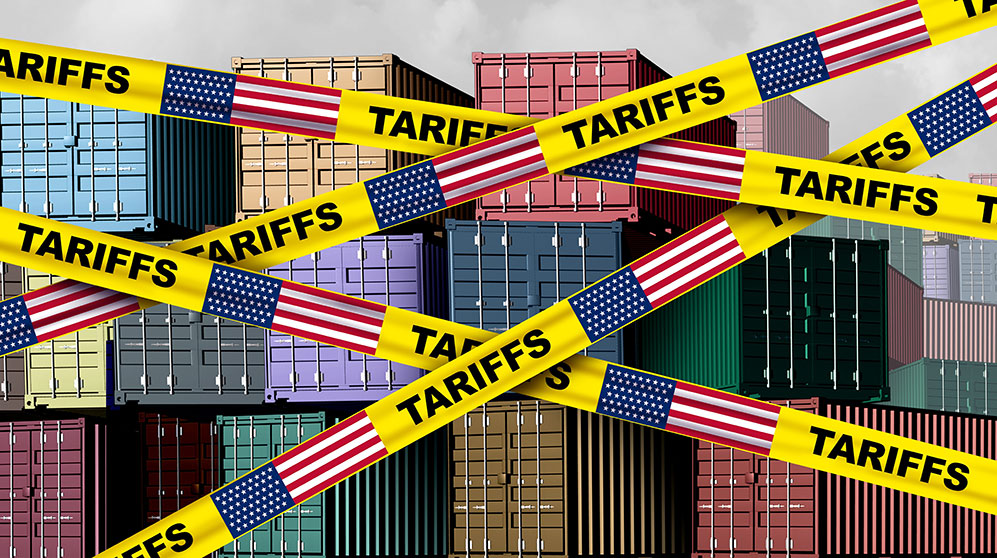The Ripple Effects of Import Tariffs on Las Vegas’ Economy and Women-Led Businesses
Las Vegas, a city synonymous with tourism, entertainment, and economic vitality, is beginning to feel the strain of import tariffs imposed by the Trump administration. Designed to boost domestic manufacturing, these tariffs have introduced sweeping changes that are impacting businesses, consumers, and the broader city economy. For a city that thrives on its status as one of the world’s most visited destinations, the ripple effects are undeniable. Notably, women-led businesses—an integral part of the local economy—are grappling with rising operational costs and shifting consumer behavior. As Las Vegas adjusts to the “new normal,” the broader economic vulnerabilities of a tourism-dependent region are coming into clearer focus.
The Economic Fallout
Tourism is the lifeblood of Las Vegas, fueling its hotels, casinos, retail stores, and restaurants. Yet, recent data signals a downturn on the horizon, with the Las Vegas Visitors and Convention Authority predicting a 5% decrease in room tax revenue for the upcoming fiscal year. This decline is tied directly to the consumer-facing effects of tariffs. Higher prices on goods and services are discouraging visitor spending, a concerning trend for a city deeply reliant on leisure and business travelers.
The story in Vegas serves as a microcosm of how import-dependent economies are especially vulnerable to federal policy changes. Rising costs tied to tariffs are rippling across multiple industries, along with households who are already grappling with inflation. Whether it's the rising price of consumer goods or reduced tourism revenue, the current economic landscape underscores the fragility of regions reliant on global trade and a steady stream of visitors.
The Tariff Landscape
Introduced on April 5, 2025, the tariffs imposed a baseline 10% charge on all imported goods, escalating dramatically to 125% for imports from China. Although designed to reduce dependence on foreign goods and incentivize domestic production, critics point out that manufacturing infrastructure in the U.S. cannot be built overnight. In the meantime, Las Vegas businesses and consumers must bear the brunt of these policy decisions.
The Consumer Perspective: Rising Costs and Tightened Budgets
Las Vegas residents and visitors alike are feeling the financial pinch as consumer costs climb steadily. A Yale University study estimates average annual household purchasing power has been slashed by $3,800 due to price increases triggered by tariffs. Specific sectors—such as clothing, automobiles, and food—have seen significant cost increases. Clothing alone has seen a 17% increase, meaning everyday items like a $30 shirt now cost $35. Car prices, another substantial expense, have risen by 8%, adding around $4,000 to the average cost of new vehicles. Even grocery staples like fresh fruit and meat have become more expensive, with food prices projected to climb by 3% overall.
Critics argue that the burden of these rising costs falls disproportionately on middle- and working-class families. For low-income households, the additional financial strain can be devastating, further widening economic disparities in cities like Las Vegas, where cost-of-living concerns already loom large.
Women-Led Businesses: Navigating Uncertain Waters
The challenges brought on by tariffs are particularly acute for women-led businesses in Las Vegas, many of which are small enterprises heavily reliant on imported goods. These entrepreneurs face a difficult choice: either pass rising costs on to consumers—potentially alienating their customer base—or absorb the costs themselves, shrinking already slim profit margins. Both options pose significant risks.
Financial analysts like Steve Budin have emphasized the long-term impact of tariffs on women entrepreneurs. While the goal of encouraging American manufacturing may hold merit, the transition to domestic production capabilities is slow and unlikely to offset the short-term struggles these businesses face.
Industry-Specific Pain Points
Certain industries are bearing the brunt of tariff-related disruptions more heavily than others. Retailers, particularly those in the clothing and footwear sectors, have experienced steep price hikes. For instance, the cost of a $100 pair of shoes has now surged to $117—a non-trivial increase for budget-conscious shoppers. Meanwhile, the food and beverage sector is wrestling with higher supply costs, translating into more expensive menu items at restaurants and rising grocery bills for families.
Additionally, the automobile industry has experienced significant repercussions, with new car prices now hovering out of reach for many households. As a result, sectors tied to car rentals—which are crucial in a tourist hub like Las Vegas—are also reeling from the compounding effects of increasing costs.
Far-Reaching Implications
Beyond the immediate price hikes and strained budgets, the tariffs have exposed deeper structural issues facing economies reliant on tourism and imported goods. For Las Vegas, the challenges extend beyond hotel taxes and retail spending. The crisis illustrates the interconnectedness of global economies and the need for policy approaches that prioritize both growth and equity. Importantly, the disproportionate impact on women-led businesses and working-class families raises questions about the long-term sustainability of such economic strategies.
Policymakers must consider how federal initiatives can align better with the realities faced by small business owners, consumers, and key economic hubs like Las Vegas. As the city continues to navigate these turbulent times, conversations around resilience, innovation, and inclusive economic solutions will be critical in shaping both its recovery and future growth.
Las Vegas is no stranger to reinvention. The question now is whether its industries and communities can adapt to this latest economic shake-up, emerging stronger and more equipped to weather future challenges.
